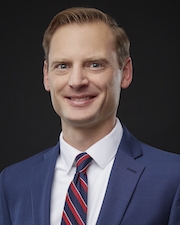To build community this fall, think of your class as a team
September 3, 2020When this photo was taken before COVID-19, it was easier for teachers to build community within their class. How do can teachers do that meeting virtually?
Many educators are concerned about building community within their classes this fall. And rightfully so. We know that in-person experiences create opportunities for students to form deep relationships, make personal connections, and build a sense of community. We know that students are more likely to flourish in school when they feel a sense of belonging and connection. How do we achieve those aims in a remote or hybrid context?
Zachary Herrmann, Executive Director of Penn GSE’s Center for Professional Learning, suggests changing your approach. Here Herrmann explains how — and why — educators should think of their classes as teams rather than a collection of individual students.
Effective teams often embody the same characteristics that teachers are striving toward, such as a strong sense of connection, support, purpose, and accountability.
According to J. Richard Hackman and Ruth Wageman’s research on teams, there are certain conditions that support team effectiveness, including that the team is a “real team,” the team has a compelling direction, and the team has a sound structure, among others. Teachers can consider how to build these conditions into their class teams.
Make your class a real team
A group of people does not make a team. As Dwight Schrute from the sitcom “The Office” acknowledges about his co-workers, “We’re no more a team than the people staying in the same hotel are a team.” Similarly, just because students happen to be assigned to the same class does not make them a part of a real team.
Herrmann is leading a three-day workshop for educators on leading yourself, others, and teams starting October 28. Learn more here.
Real teams have a unique identity, and team members share a common purpose. According to Hackman and Wageman, members of real teams work interdependently on tasks for which they have collective accountability.
As teachers, we should consider how to:
- Build a class team identity, perhaps including elements such as a name, slogan, set of norms, rituals, and traditions.
- Design projects and tasks that promote interdependence among students, where students must support and rely on each other, not just themselves, to build collective products.
- Find ways in class activities to emphasize collaboration and cooperation, over competition and individual achievement.
Give your class a compelling direction
Even when members of a team feel tied together, their collective sense of purpose and meaning may not be activated without a compelling direction. According to Hackman and Wageman, “Direction is critical in energizing a team, in getting it properly oriented toward its major objectives, and in engaging members' talents.”
Many schools have historically struggled to create engaging environments for their students. Now, given that so many of our students (and our fellow teachers) are experiencing significant levels of uncertainty and ambiguity in their personal and social lives, students who feel disconnected from their school work may be even quicker to disengage. To build a true sense of team, a class’s compelling direction must be more than simply to prepare for the next test.
As teachers, we should consider how to:
- Define a collective purpose for our class that transcends school, and helps students see the “bigger picture” of their work. What is your class working toward?
- Create projects, tasks, and lessons that help students make personal connections to their work in school.
- Design opportunities for students to make real contributions to authentic audiences, where students are taking on a challenge or opportunity facing their community.
Organize a sound team structure
Effective teams consider more than just where they are heading; they also consider how they are going to get there. This work involves designing tasks, roles, and norms that support a team in making progress toward their compelling direction. These factors help answer the question: How will we work together as part of this team? Defining these norms is critical to team effectiveness. According to Hackman, “All groups develop norms that specify what behaviors are expected of group members and what behaviors are out of bounds.”
Traditional ways of thinking about team norms and processes will likely need to shift in a virtual or hybrid setting. For example, a class will likely need to invent new class team structures to communicate, share information, give and receive feedback, collaborate, and connect with one another both synchronously and asynchronously.
As teachers, we should consider how to:
- Develop norms with our students that explicitly address how we will work together, with an emphasis on collaboration and collective accountability.
- Determine what new classroom roles students can take on to support a highly functioning class team, as well as build a sense of ownership over the class team.
- Define clear channels for communication among members of the team, as well as other team stakeholders, such as student families.
- Develop predictable asynchronous and synchronous routines — to the extent possible — to allow for personal connection, relationship building, and collaboration.
We will likely need to work harder this fall to build the types of class communities that our students deserve. Cultivating within our class a sense of identity and connectedness, establishing a compelling direction, and designing structures to support our work can help our classes realize the potential that comes with effective teams.


